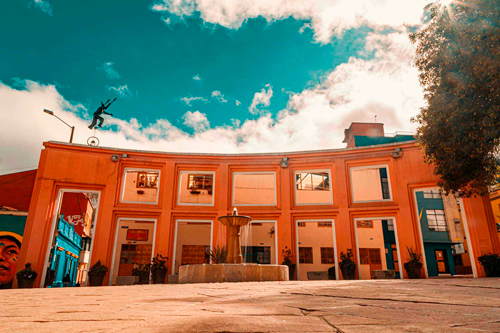
Colombia 4.0
On October 30 and 31, the Colombia 4.0 fair will take place at the Corferias exhibition center. This event will bring together approximately 200 experts from the digital innovation ecosystem to share knowledge through trade shows, business roundtables, and different activities highlighting technological developments in Colombia and Latin America.
National Student Expo 2024
Bogotá is ready to receive the National Student Expo, a free space that offers information about programs, universities, and topics related to financing and academic counseling. For 4 days, students, teachers, parents, educational institutions, and the general public will learn first-hand about the best higher education offerings.
CatCoffee
En CatCoffee, nos apasiona ofrecer una amplia variedad de cafés de alta calidad, seleccionados cuidadosamente para satisfacer los paladares más exigentes. Además, creemos en la importancia de compartir el conocimiento sobre el proceso del café, desde la cosecha hasta la taza, y en promover el aprecio por esta bebida emblemática.
A través de talleres, degustaciones y eventos especiales, CatCoffee se dedica a enriquecer la experiencia cafetera de nuestros clientes, convirtiendo cada visita en un viaje de descubrimiento y sabor.
The Beatles Symphonic Fantasy
The Beatles' legacy comes to life in an exciting and unique international show, The Beatles Symphonic Fantasy. This orchestral production has taken fans of the British band around the world (Europe, East, and Latin America) on an unforgettable journey featuring the band's most iconic songs in a completely new format.
Los Aguilar in Colombia
Don’t miss the opportunity to see the Aguilar Dynasty perform together in Colombia for the first time! Pepe, Angela, and Leonardo Aguilar will be in the heart of Bogotá on October 25, offering a show that highlights the incredible talent that this family has shared from generation to generation. Enjoy an unforgettable concert full of music and tradition!
How to get there?
Todos Juntos: Diego Torres, Santiago Cruz, Pedro Capó and Mario Bautista
On October 20, the Movistar Arena will host a special musical event with a noble mission: eradicating child hunger in Colombia. The concert, titled Todos Juntos, is organized by ABACO (Colombian Food Bank Association) and Páramo Impacta. This show will bring together renowned artists to raise funds in support of nutrition programs for the country's most vulnerable communities. Join us for a night filled with music and solidarity in support of this important cause!
How to get there?
Blessd Bogotá
Stiven Mesa Londoño, El Bendito, also known as Blesed, is a singer from Antioquia who has emerged as the new star of Colombian perreo. With three albums— "Hecho en Medellín," "Siempre Blessd," and "SI SABE"—released over the past three years, he has built a dynamic career. He will be performing live at the Movistar Arena on October 18 and 19.
How to get there?
Andrés Cepeda: Nuestra vida en canciones - Bogotá
Don't miss the stunning concert by Andrés Cepeda in Bogotá on December 13 at El Campín Stadium. Join us for a magical night featuring the greatest hits from this talented artist. It promises to be an unforgettable experience, bringing together tourists and locals to sing and enjoy the rhythm of his melodies. Get your ticket now and be part of the Nuestra Vida en Canciones Tour, a true celebration of music.
How to get there?
Aventura
Bachata royalty will arrive in Bogotá on December 14 to take over El Campín Stadium as part of their farewell tour, Cerrando Ciclos. Fans will enjoy the greatest hits, which have made generations of Latinos dance around the world and experience the romanticism of the Caribbean through its voice.
How to get there?
Cultura Profética and Vicente García
Cultura Profética and Vicente García are set to perform in Bogotá, bringing a vibrant musical show infused with Caribbean soundsCultura Profética will deliver their signature reggae and sensual melodies, while Vicente García will add his unique blend of boleros, bachata, soul, and more. This exciting musical event will take place on December 14, 2024, at the Movistar Arena in Bogotá, transporting the audience to Puerto Rico and the Dominican Republic, the artists' home countries.
How to get there?